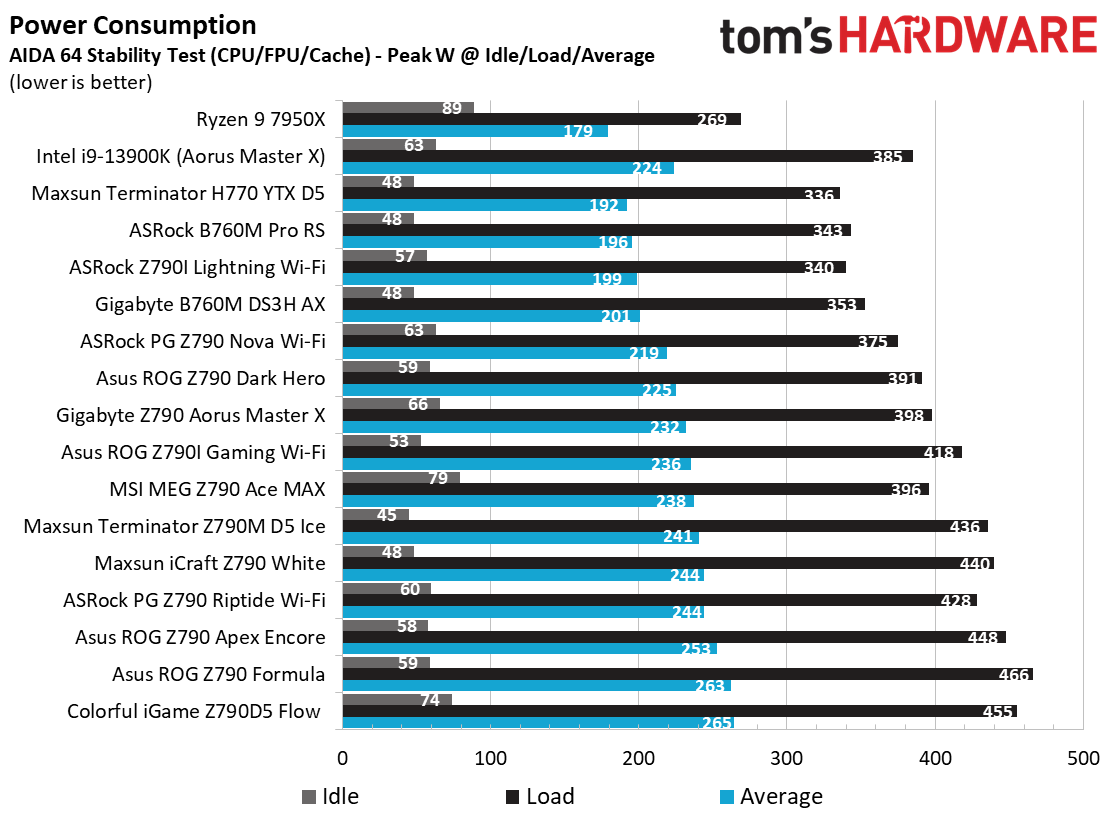Why you can trust Tom's Hardware
Our standard benchmarks and power tests are performed using the CPU’s stock frequencies (including any default boost/turbo) with all power-saving features enabled. We set optimized defaults in the BIOS and the memory by enabling the XMP profile. For this baseline testing, the Windows power scheme is set to Balanced (default) so the PC idles appropriately.
Synthetic Benchmarks
Synthetics provide a great way to determine how a board runs, as identical settings should produce similar performance results. Turbo boost wattage and advanced memory timings are places where motherboard makers can still optimize for stability or performance, though, and those settings can impact some testing.





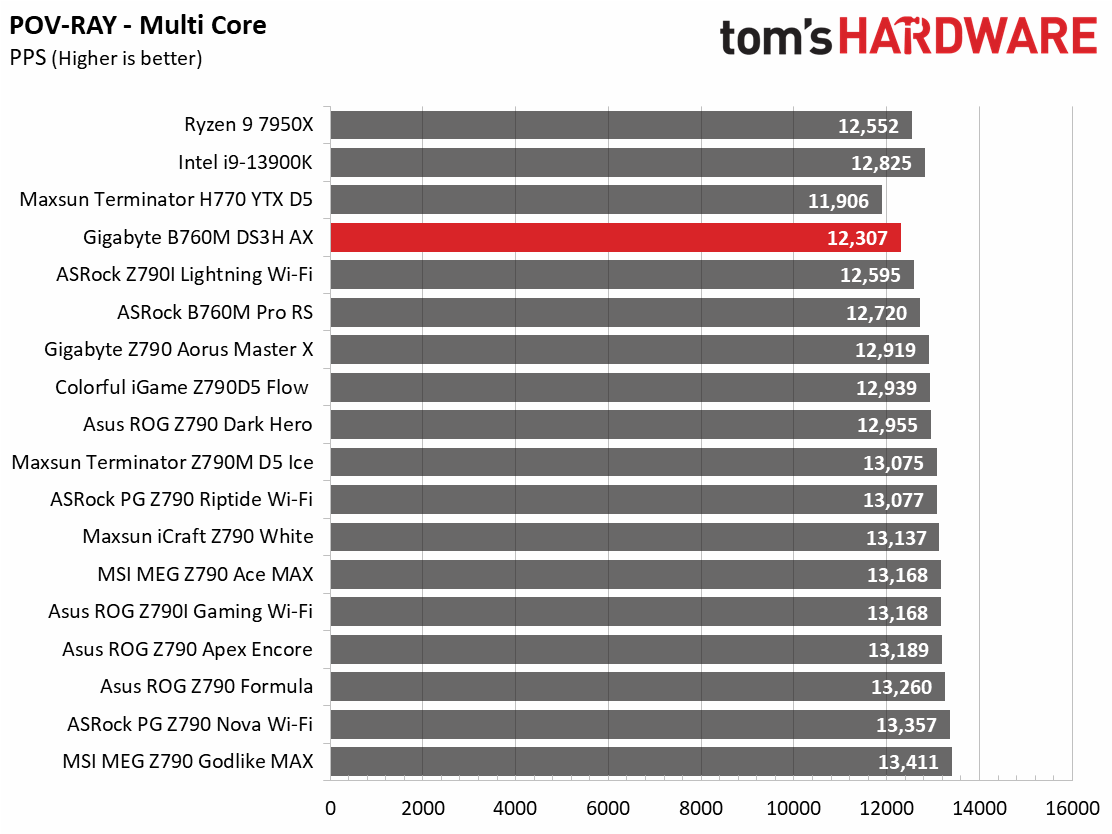
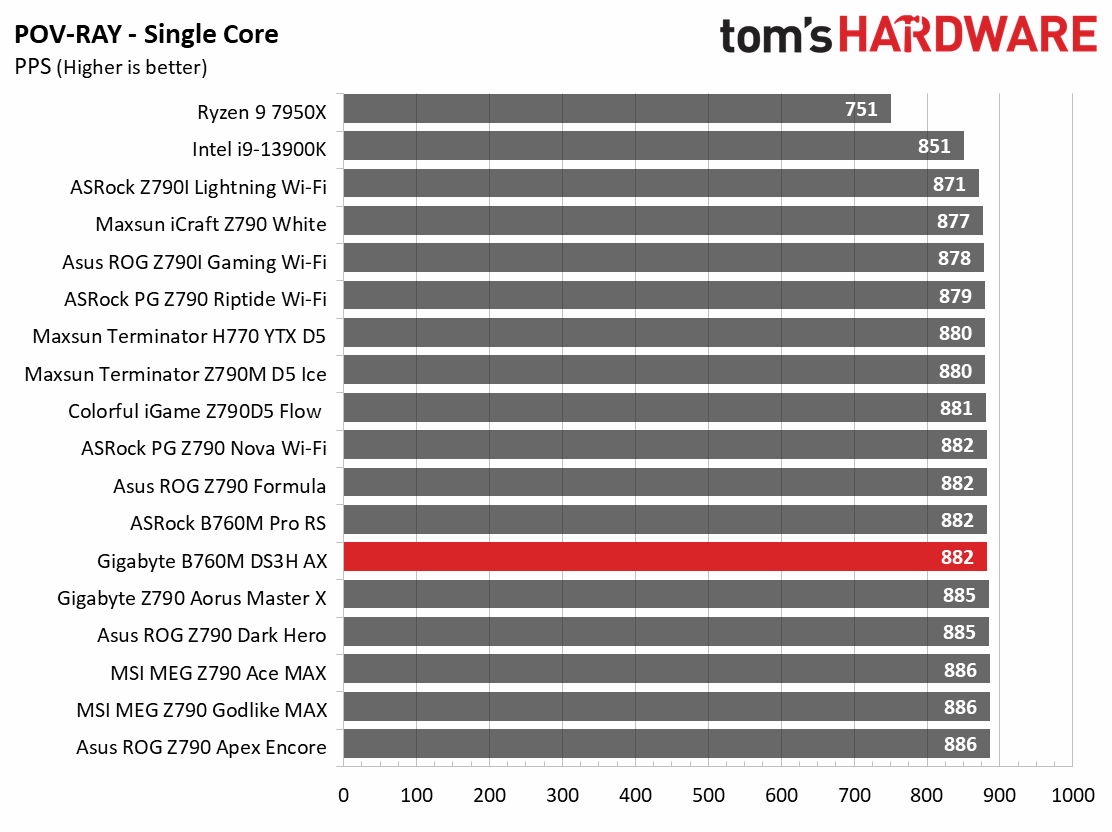

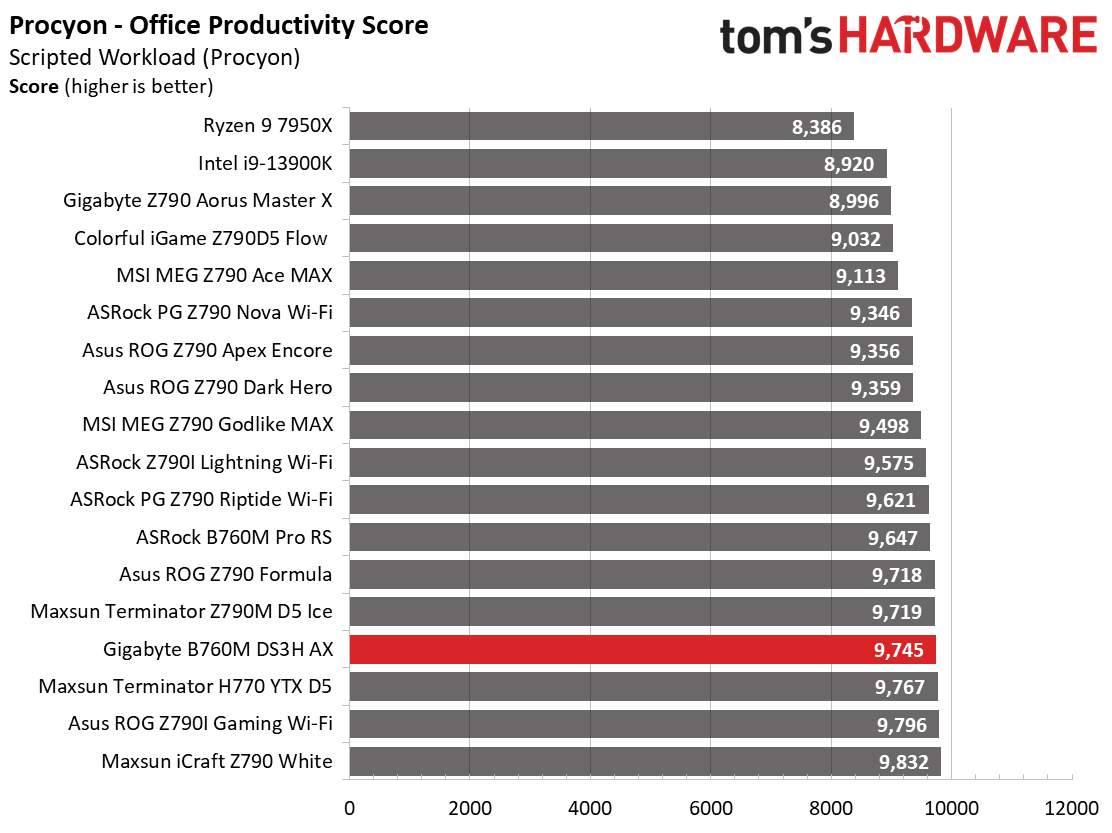

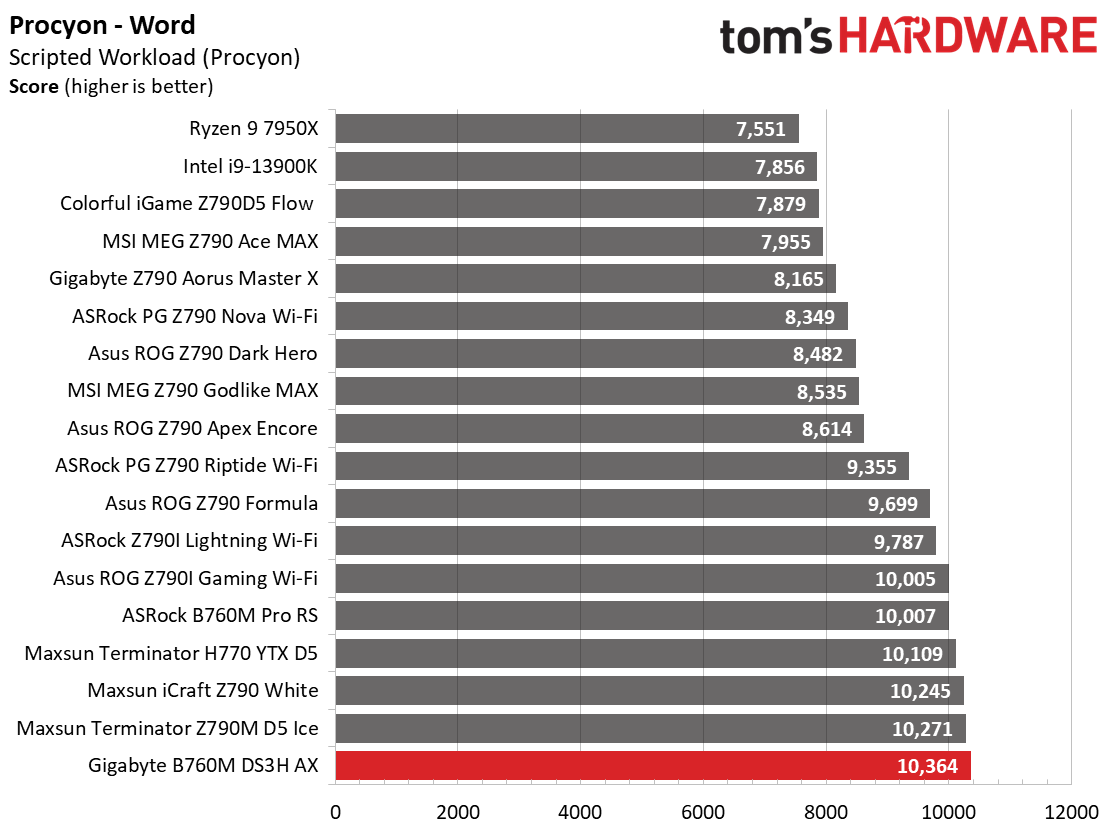




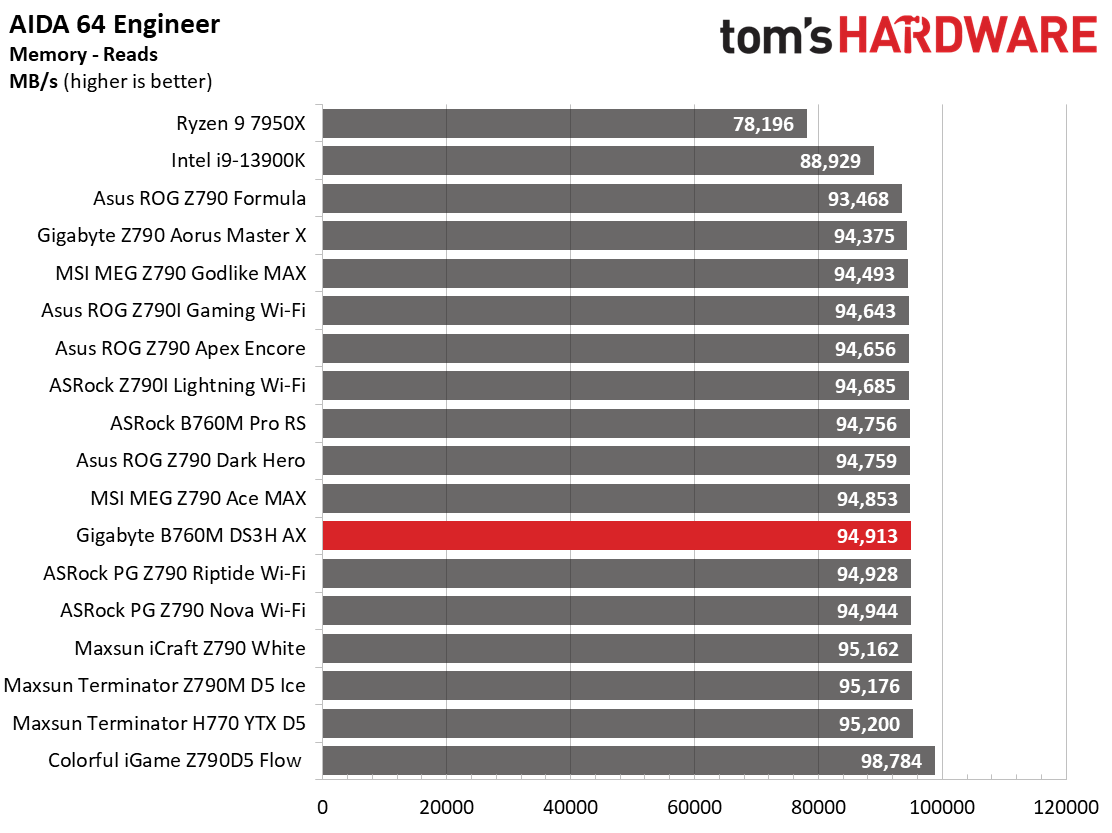



Performance across our synthetic benchmarks was generally below the average due to the default power limits. PL1 is set to around 215W (lower than the stock 253W for some processors) and drops to 125W after the boost duration ends. Because of this, any long-running and heavily threaded applications take a significant hit while others match up with most other boards. POV-Ray and Cinebench run fine single-threaded but revert to some of the slowest scores in their multi-threaded tests.
Our Procyon Office tests showed promising results, mixing it up with some of the faster, less restrictive boards. So, if you’re doing light work like this, you probably won’t notice a difference.
Timed Applications




The timed applications show similarly poor results. LAME times were average (short running), while Corona was the slowest we’ve recorded by one second. Handbrake results were the slowest we’ve recorded with this CPU, another sign of how limited it is with a high-powered CPU in longer-running, heavily threaded testing.
3D Games and 3DMark
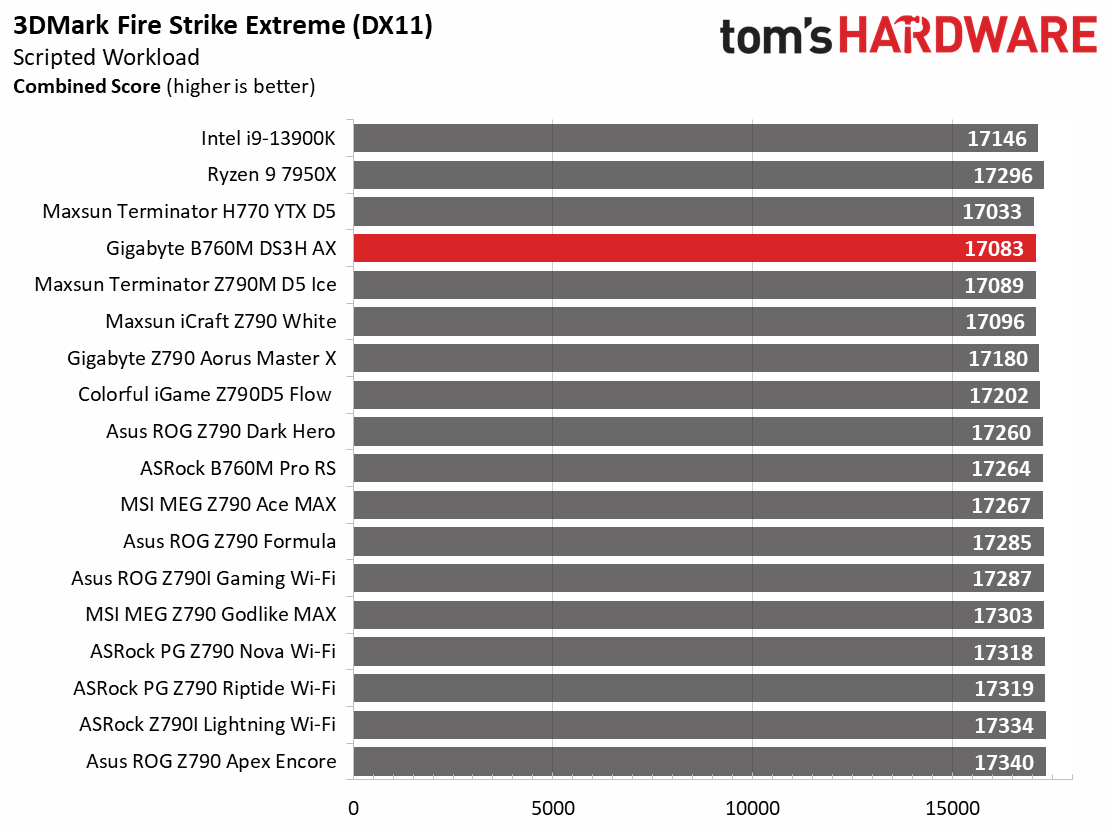
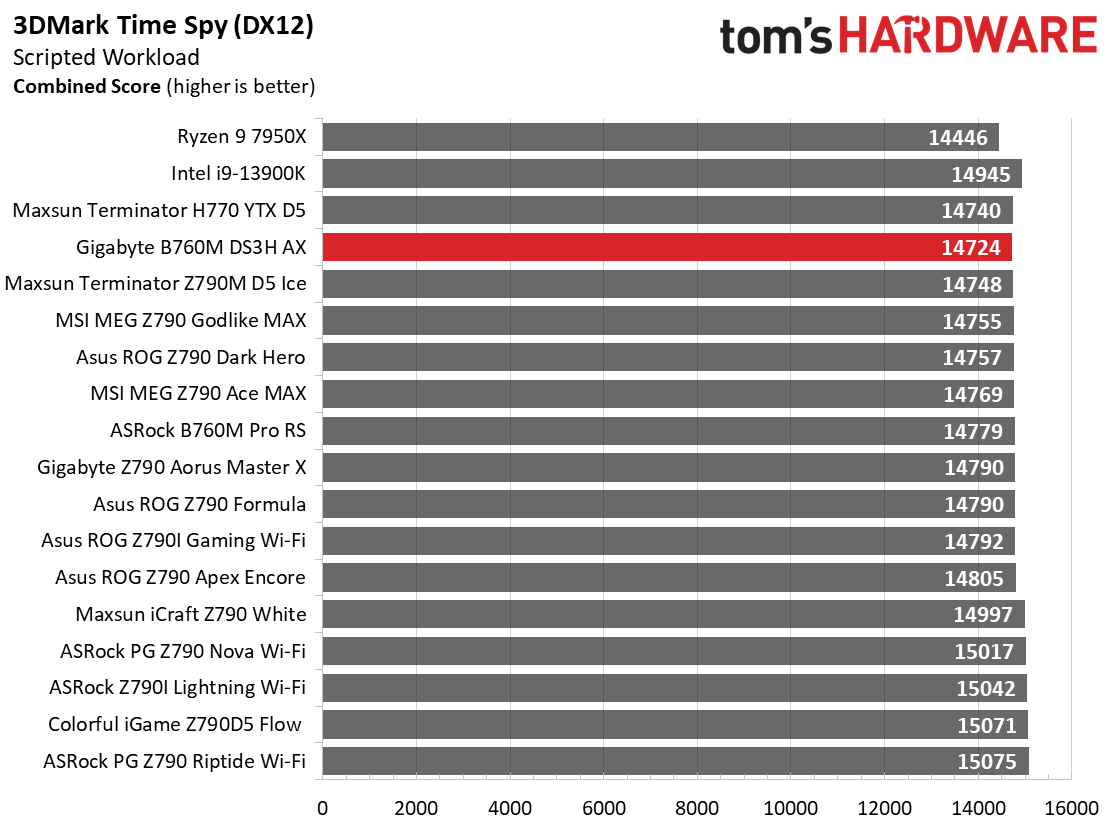


Starting with the launch of Zen 4, we shifted our test games from F1 21 to F1 22 while keeping Far Cry 6. We run the games at 1920x1080 resolution using the Ultra preset (details listed above). As the resolution goes up, the CPU tends to have less impact. The goal with these settings is to determine if there are differences in performance at the most commonly used (and CPU/system bound) resolution with settings most people use or strive for (Ultra). We expect the difference between boards in these tests to be minor, with most falling within the margin of error differences. We’ve also added a minimum FPS value, which can affect your gameplay and immersion experience.
Game testing showed promise, with the DS3H AX performing admirably in our two games. 3DMark testing was slower than the rest, partly due to the CPU test, which scored lower than other boards. Still, we give this board a nod as a capable gaming machine, even with a thermal cap on our CPU.
Get Tom's Hardware's best news and in-depth reviews, straight to your inbox.
Overclocking
Generation after generation, overclocking headroom has been shrinking with both Intel and AMD processors, with motherboard partners pushing the limits to set themselves apart from the plethora of options available to the consumer. With the overclocking headroom all but gone, we’ve left things at stock for cores but will push the Integrated Memory Controller (IMC) for faster RAM. Remember, for 14th-gen CPUs, the maximum stock spec for memory is DDR5-5600. We have a DDR5-7200 kit and a DDR5-8000 kit in-house to test the higher speeds.
As far as overclocking the RAM (since B760 can’t overclock the processor), the budget Micro ATX board ran the Kingston DDR5-6000 and the Teamgroup DDR5-7200 kit by enabling the XMP profile in the BIOS—no tweaks required. We didn’t try our DDR5-8000 kit as the board isn’t rated that high. Still, DDR5-7200 is plenty fast for the platform, especially for an entry-level board.
Power Consumption / VRM Temperatures
We used AIDA64’s System Stability Test with Stress CPU, FPU, Cache, and Memory enabled for power testing, using the peak power consumption value. The wattage reading is from the wall via a Kill-A-Watt meter to capture the entire PC (minus the monitor). The only variable that changes is the motherboard; all other parts remain the same. Please note we moved to using only the stock power use/VRM temperature charts. Since the system uses every available degree Celsius, unless you’re using a sub-ambient cooling solution, you’ll use more power and generate more heat using default settings.
Power use on the Micro ATX board was good overall, as you’d expect with the power limits in place. At idle, the DS3H AX hovered around 45W—one of the lower values. During a stress test, power use peaked at 353W and then dropped to under 275W after the CPU went back to the base 125W TDP.


VRM temperatures peaked around 67 degrees Celsius during our stress tests, which isn’t terrible on the surface. But that’s with just 125W allowed through the CPU. If you plan on running any processor with a 253W boost Limit (think 14th-gen K chips), you cannot stretch its legs like with other motherboards. Your best bet is to actively cool them when pairing them with a high-power processor. Lesser processors with lower TDPs shouldn’t be as limited, and the VRMs should hold up with little fanfare.
Bottom Line
When your budget only allows for a board under $130, you won’t get many extras or creature comforts (think EZ-Latches on M.2, etc.), but you should get something that supports a wide range of hardware and runs stable and is generally performant. The Gigabyte B760M DS3H has most of that and a bit more if you count the rare three-display capability it has with the dual DisplayPort ports and HDMI. Outside of that, you get more of the basics: two M.2 sockets, four SATA ports, 2.5 GbE, and integrated Wi-Fi 6E. It won’t likely be the star of your PC chassis, but it matches most dark build themes.
There is a fair amount of competition in this space, though finding a direct competitor by exact hardware or price isn’t easy. The ASRock B760M Pro RS ($123.99) is a solid competitor, offering a lot more value (and even some RGB bling). Asus’ Business-class motherboard, the Pro B760M-CT-CSM ($119.99), is the most reasonably priced option, offering a wide variety of video outputs, but is also limited on M.2 storage count like the Gigabyte, and presumably just as locked down. MSI’s Pro B760M-A Wi-Fi ($209.99) priced itself out of competition with these boards. Of these, the ASRock is the most handsomely equipped and reasonably priced, but all offer something over the other.
Overall, we do like what the Gigabyte B760M DS3H AX offers. Performance is on par with the other B760M boards we tested and lags behind most others in those heavily threaded and long-running tests when using our high-powered i9-14900K. Assuming you’re running a processor with a lower TDP, you won’t be able to reach the same limits. Still, the board did well in the MS Office testing and our game tests, but if you plan to drop a flagship-class processor and beat on it, you may want to look further up the product stack for something with more robust power delivery.
MORE: Best Motherboards
MORE: How To Choose A Motherboard
MORE: All Motherboard Content

Joe Shields is a staff writer at Tom’s Hardware. He reviews motherboards and PC components.
-
Amdlova Got my asrock H670 PG something for 105usd :S way better than a b760 and a lenovo ax211 wi-fi card for 10us new on ebayReply


